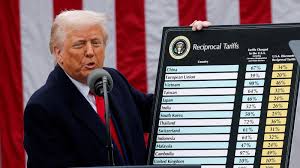Analyzing the Impact of Trump Tariffs on Global Trade

Introduction
The Trump tariffs, enacted during the administration of former President Donald Trump, have continued to shape discussions around global trade dynamics well beyond his term. Originally intended to protect American industries, these tariffs have prompted a re-evaluation of trade policies worldwide, influencing everything from pricing to international relations.
The Context of Trump Tariffs
Implemented in 2018, the Trump administration imposed additional tariffs on various products, primarily targeting China, with the intention of combatting what was perceived as unfair trade practices. The tariffs affected hundreds of billions of dollars worth of goods, including steel, aluminum, and a wide array of consumer products.
The move was controversial, sparking retaliatory tariffs from affected countries and heightening existing trade tensions. For instance, China’s response included its own tariffs on U.S. agricultural goods, adversely affecting American farmers and escalating a trade war that many economists warned could disrupt global supply chains.
Current Economic Implications
As of late 2023, the ramifications of these tariffs are ongoing. Economists have noted mixed results; while some American manufacturers saw a temporary boost in local production, the overall cost of goods has increased for consumers. Companies reliant on imports have faced higher costs, which have often been passed down to consumers, leading to inflationary pressures in the U.S. economy.
Moreover, the durability of these tariffs has led many businesses to reconsider their supply chains and sourcing strategies. Some have shifted operations outside of China to avoid tariffs, moving to countries like Vietnam and India to maintain competitiveness while mitigating the effects of high tariffs.
Political and Global Trade Relationships
Trump tariffs have also altered the political landscape. With the Biden administration, there has been considerable debate over whether to maintain these tariffs or renegotiate trade terms with affected nations. Some policymakers argue for their removal to help curb inflation and ease relations with trading partners, while others insist they are necessary for protecting American interests.
Internationally, countries that were affected by the tariffs have also sought to forge new trade agreements to counterbalance the U.S. actions, forming alliances and partnerships that may reshape the future of global trading systems.
Conclusion
The impact of Trump tariffs remains significant and multifaceted, influencing not only the U.S. economy but also the nature of international trade relationships. As countries navigate the complexities of tariffs, the actions taken now may determine the trajectory of global trade in the coming years. With ongoing debates about trade policy, businesses and consumers alike will feel the effects of these decisions as they unfold.







